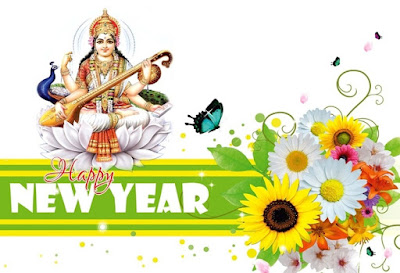New Year 2018
 |
| jaimaaambe.blogspot.com |
New Year is the time at which a new calendar year begins and the calendar's year count is incremented. In many cultures, the event is celebrated in some manner. The New Year of the Gregorian calendar, today in worldwide use, falls on 1 January (New Year's Day), as was the case with both the old Roman calendar and the Julian calendar that succeeded it. The order of months was January to December in the Old Roman calendar during the reign of King Numa Pompilius in about 700 BC, according to Plutarch and Macrobius, and has been in continuous use since that time. In many countries, such as the Czech Republic, Italy, Spain, the UK, and the United States, 1 January is a national holiday.
During the Middle Ages in western Europe, while the Julian calendar was still in use, New Year's Day was variously moved, depending upon locale, to one of several other days, among them: 1 March, 25 March, Easter, 1 September, and 25 December. These New Year's Day changes were generally reversed back to January 1 before or during the various local adoptions of the Gregorian calendar, beginning in 1582. The change from March 25 – Lady Day, one of the four quarter days – to January 1 took place in Scotland in 1600, before the ascension of James VI of Scotland to the throne of England in 1603 or the formation of the United Kingdom in 1707. In England and Wales (and all British dominions, including the American colonies), 1751 began on March 25 and lasted 282 days, and 1752 began on January 1. For more information about the changeover from the Julian calendar to the Gregorian calendar and the effect on the dating of historical events etc., see Old Style and New Style dates.
A great many other calendars have been in use historically throughout the world, some of which count years numerically, and others that do not. The expansion of Western culture during recent centuries has seen such widespread official adoption of the Gregorian calendar that its recognition and that of January 1 as the New Year has become virtually global. For example, at the New Year celebrations held in Dubai to mark the start of 2014, the world record was broken for the most fireworks set off in a single display, which lasted for six minutes and saw the use of over 500,000 fireworks.
Nevertheless, regional or local use of other calendars persists, along with the cultural and religious practices that accompany them. In many places (such as Israel, China, and India), New Year's is also celebrated at the times determined by these other calendars. In Latin America, the observation of traditions belonging to various native cultures continues according to their own calendars, despite the domination of subsequent cultures. The most common dates of modern New Year's celebrations are listed below, ordered and grouped by their appearance relative to the Gregorian calendar.










No comments